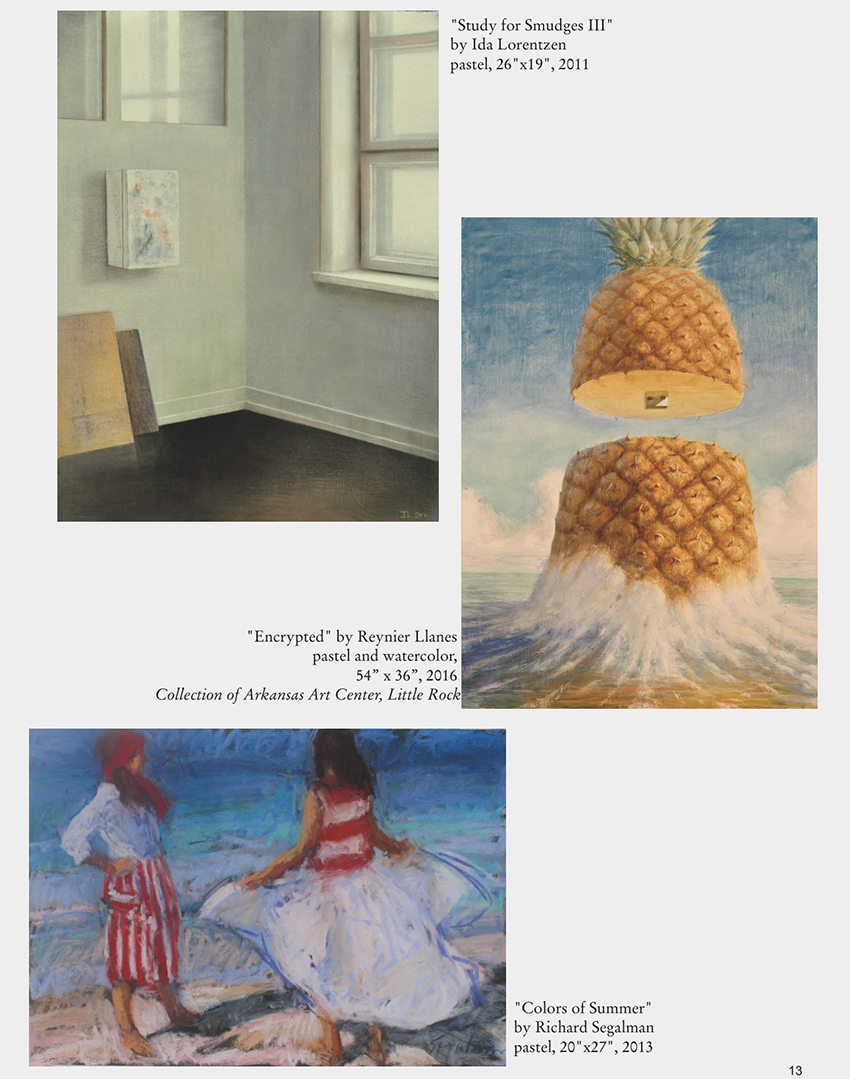|
Pastel Medium
Dear Artsperts:
I've always wondered, what is meant when a painting is called a pastel? Does it mean that it has a soft subdued color or does it mean it is made with chalk?
Signed,
Dusty
Dear Dusty,
A painting that is called a pastel is not referring to the shades of color in the painting but rather to the particular medium used to create the painting. Pastel is also vastly different from chalk, though they are often misunderstood as being one in the same. The only similarity with the two is in their physical form. Both chalk and pastels come in round or square sticks, but that is where their similarities end. Chalk, which can be used as a temporary art-form on sidewalks, is simply ground limestone with added coloring. Pastel on the other hand is the purest art medium of all and is the crushed earth elements (i.e. pulverized rocks) compressed into a stick for easy conveyance to a heavy paper.
Since each color in a pastel set comes from a different source the artist must select the exact color he or she wants. A master set of pastels can actually include up to several thousand varying shades of every color in the rainbow plus shades of black and white. While, your eye may mix the colors of a pastel painting there is no physical mixing of colors to achieve a third color, such as in painting with liquid forms of medium like oils or acrylics.
Pastel paintings may seem very fragile but if created on the proper paper and given the care due any work of art, pastels can actually outlast an oil painting. Mary Cassatt pastels created in the late 1880s are as alive and vivid today as they were when she created them. Pastels cannot fade since they are pure pigment. Direct sunlight will do more harm to the paper than to the pastel. Another concern is whether or not the pastels will eventually fall off the paper, especially if the work is dropped. While some "dusting" may occur, damage done to an oil painting that is dropped can be more significant.
One issue about pastels, and their close cousins of oil pastels, charcoal and conte crayon has always been that they must be behind glass. When Plexiglas was first used as a substitute in framing works on paper, they were not acceptable choices because the Plexiglas could create a static bound with the medium and pull elements of the painting away from the paper. While it did not damage the work of art, it did create a layer of film on the inside of the plexiglass. That problem has been solved with the introduction of Optium Acrylic, which is anti-static, uv filtered, and non-reflective (see page 34 article on reflection).
The pastel medium in its modern form dates back to the 18th century, but in its more primitive form the medium dates back to prehistoric cave drawings. As such it is considered the earliest medium for painting since it is made of ground earth elements. The medium continues in use to this day. The Pastel Society of America founded in 1972, based in New York City, hosts an annual competitive show in September at the National Arts Club in Gramercy Park, NYC. (www.pastelsocietyofamerica.org). Contemporary artists represented by Harmon-Meek Gallery who work in pastel include: Ida Lorentzen, Reynier Llanes, and Richard Segalman.
Sincerely,
The Artsperts
|


